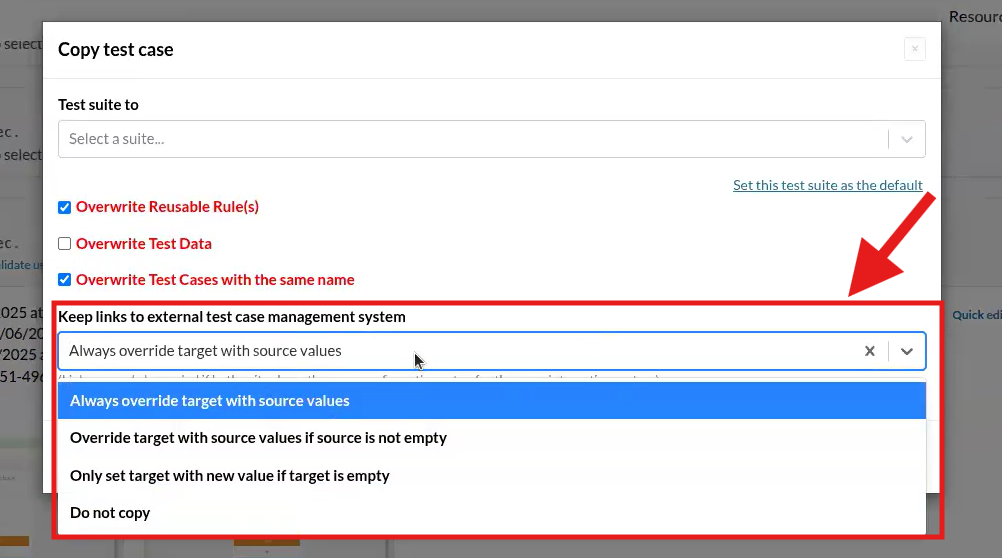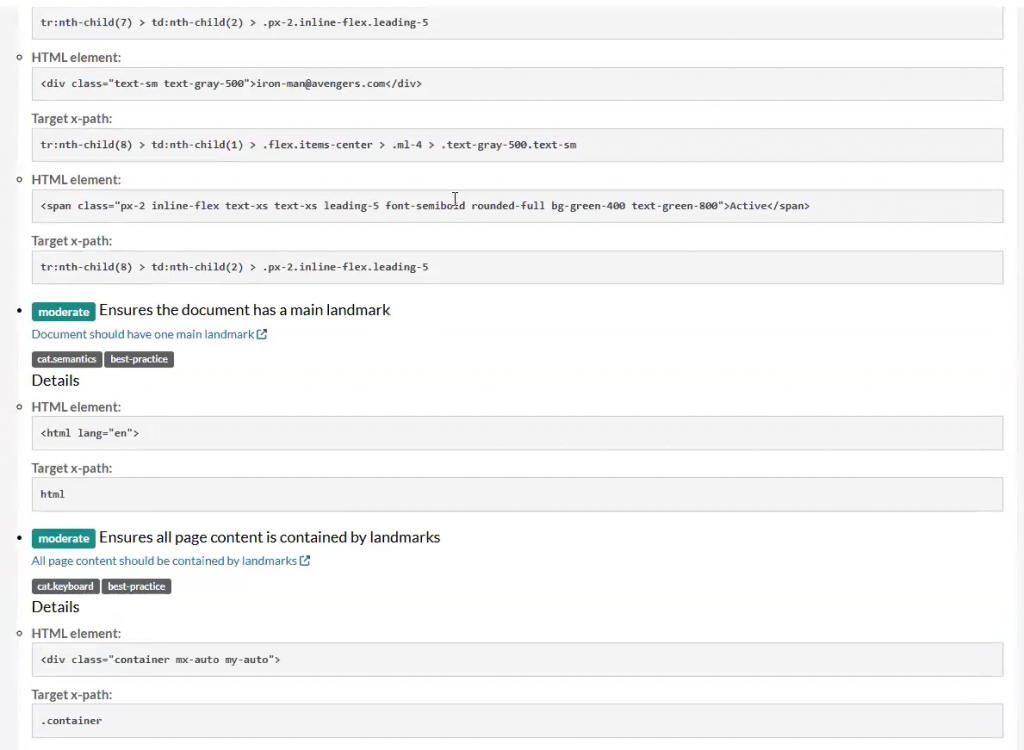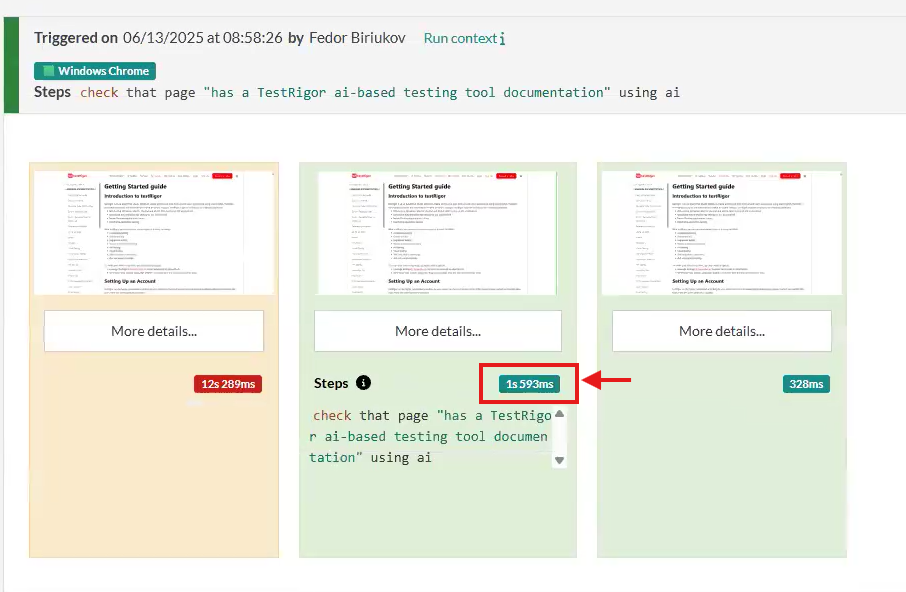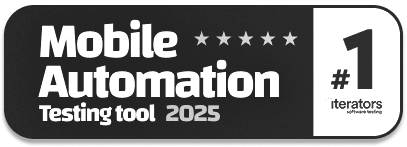Release Notes: Preserved Links, Accessibility Standard, Cached Response
|
|
Preserve Test Case Management Link When Copying Existing Test Cases Between Suites
testRigor has improved the process of copying test cases between test suites by ensuring that links to external test case management systems (such as Azure DevOps, TestRail, Zephyr, and others) are now preserved. Previously, these links were only copied when a test case was newly created; copying existing test cases between suites did not retain the management system links.
New Copy Options for Test Case Management Links
When copying test cases between test suites, you now have four flexible options:
-
Always override target with source values: The target suite’s management system links, will always be replaced with those from the source.
-
Override target with source values if source is not empty: The target will be updated only if the source value is present (not empty).
-
Only set target with new value if target is empty: The target will be updated only if it currently has no value.
-
Do not copy: The management system link will not be copied to the target suite.
Note: Options 2 and 3 are available only if you choose to overwrite test cases in the target suite. These options apply when a test case with the same name already exists in the target suite.

Caption: Test case management copy options.

Caption: Copied test case, preserving its link.
Select Accessibility Standard for Automated Accessibility Testing
testRigor now offers enhanced accessibility testing by allowing users to select specific accessibility standards for their test suites. With this new feature, you can choose the exact standards—such as WCAG, Section 508, or others—against which your suite will be validated.
If no standard is selected, testRigor will default to comprehensive accessibility testing, reporting all detected errors and violations as before. This ensures your test reports remain thorough and actionable, helping you identify and resolve accessibility issues efficiently.
By tailoring accessibility testing to your chosen standards, you can streamline compliance efforts, improve report relevance, and ensure your applications meet industry-specific accessibility requirements.

Caption: Accessibility Standard options.

Caption: Accessibility Standard results.
AI Commands Caching for Faster Test Execution in testRigor
To significantly improve test execution speed and efficiency, caching has been implemented for AI-driven validations and clicks. When re-running a test case, If screenshots are identical, then cached result is reused. When the screenshot matches pixel-to-pixel with the previous run, the same action, return, and validation are automatically repeated—bypassing the need to re-invoke AI processing. If differences are detected, AI evaluation proceeds as normal.
Key Features and Benefits:
-
Applicable to All AI Commands: This caching applies to validations, click, hover, drag, grab, everything that has using
aiaddition to it -
Pixel-Perfect Screenshot Matching: Cached results are reused only when the screenshot is an exact match; any prompt or UI change triggers a fresh AI evaluation.
-
Significant Speed Gains: Steps that once took 29 seconds can now complete in as little as 1.5 seconds by leveraging cached data.
-
Optimized Resource Usage: Reduces unnecessary AI calls, saving computational resources and lowering execution time.
How It Works:
-
On test re-run, the system checks for a cached screenshot from the previous execution (Image 1).
-
If an identical screenshot exists, cached results are reused for validations and actions (Images 2 and 3).
-
If differences are detected, AI evaluation proceeds as normal to ensure accuracy.
This intelligent caching mechanism enables faster, more efficient, and resource-friendly AI-powered test automation, enhancing overall testing performance and cost-effectiveness.

Caption: Run comparison times.

Caption: First run time with AI.

Caption: Second run time with less time for execution.











